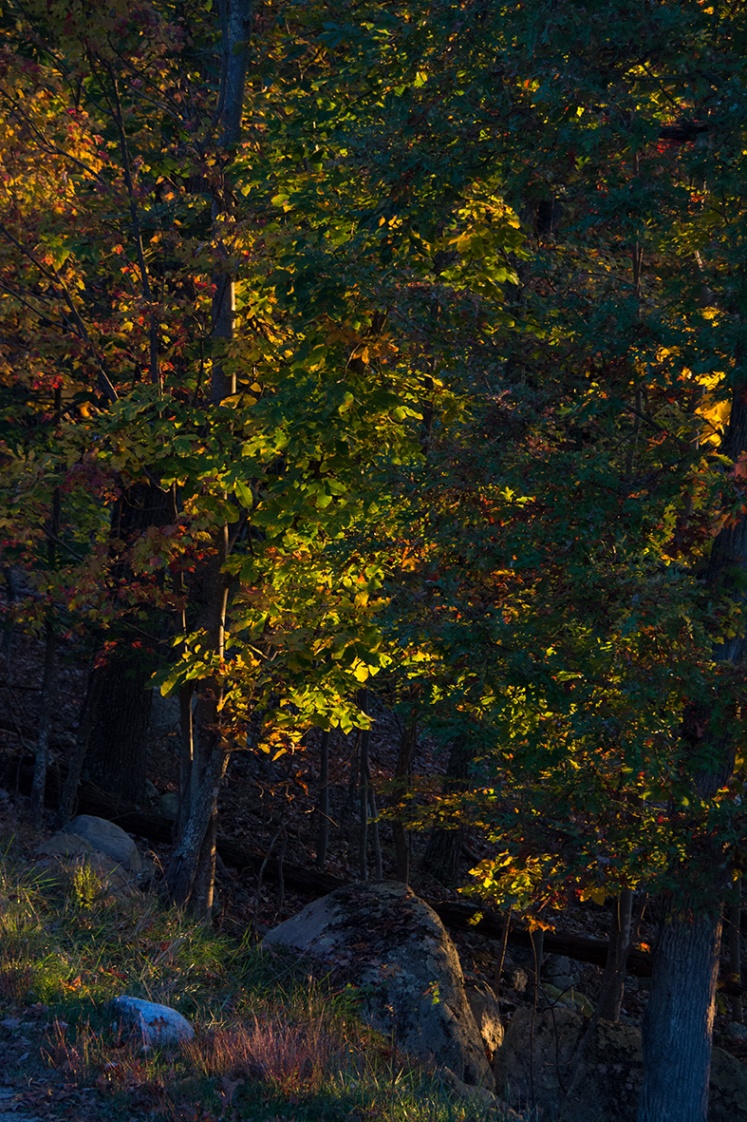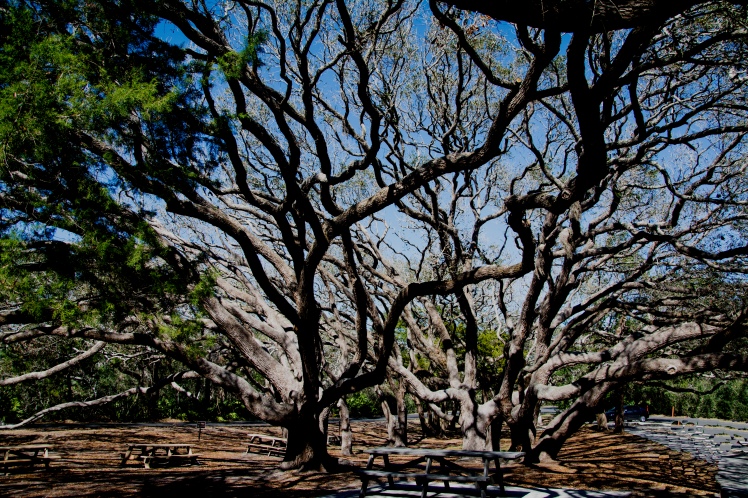
My mind fills with thoughts of trees these days. I hear of plans to destroy the landscape here and there across the planet. Greed now claims the upper hand over compassion.
You might ask, “Why trees? Surely there are far greater issues around which to rally?”
Perhaps. For the moment, I just ask one thing of you: Breathe. Deep. Do it again.
Now we’re ready to contemplate the lives of trees.
Many theories abound, in recently published books written by erudite authors on top of their game. There’s Peter Wohlleben from Germany, who believes that trees bond in family groupings.* There’s Eric Rutkow from the United States, who suggests that thick primal forests made America great.** And there’s Manuel Lima from Portugal, who sees trees as an organizing meme throughout history.***
That’s all academic, valuable and insightful. But what of the personal?
For there’s me, and there’s you, tiny specks in the immensity of the universe, whirling on a placid orbit around the sun on our beautiful planet, Earth.
My love of trees, so profound on any ordinary day, causes me sharp and jagged pain when I see the denuded stumps and piles of stacked branches after hurricanes like Matthew or when I drive through miles of wasted, mutilated logs lying in the dark red dirt of the Georgia back country.
Where my love of trees comes from, I don’t really know. Perhaps it’s an innate quality? Or perhaps it comes from something else, something hidden in my subconscious?
Much of my early life I spent in a small town surrounded by the rolling hills of the Palouse in eastern Washington state, where the tallest plants seemed to be the wheat that sprouted in fields laid out all around the town. Maple trees lined the street where I lived. Four of those beauties loomed in front of my house. And in the fall they shed their leaves, sparkling red and orange, in massive piles, which made possible enormous leaf forts and cozy places to burrow, escape hatches from the responsibilities of being the oldest of four children.
I speak here of trees in the northern hemisphere. Tropical trees tell their own story, one best delayed for another time.
Now, when fall arrives, and the shriveled orange and red leaves begin to drop to earth, an inexplicable sadness sweeps over me. The feeling is one of absence and loss, a transformation from life to a state of non-being. Hibernation describes this state only to a certain extent. The trees settle down into a deep sleep, resting. In our modern hurry-hurry world, the rest granted to trees eludes me. And most of us. Our ancestors knew this rest, up to a point, for the short days and long nights of the winter months forced them into relative inactivity, at least in the fields. Winter meant time to hunker down and survive.

Trees serve many purposes. For humans, they provide the materials necessary for shelter, food, clothing, fire, medicines, paper, habitat for animals and insects. Even musical instruments to mimic the sounds of leaves rustling and water trickling in streams. The list becomes a long one.
All these illustrate the vital importance of trees. But there’s something else that trees provide, and it’s the very essence of Life. Trees hover behind our power to breath. Air, in other words.
Trees, as Peter Wohlleben writes in The Hidden Life of Trees, serve as the lungs of our planet. Their oxygen-producing leaves give life to other living things. That means me. You. And all the billions of other people who share the planet with us. There’s something pure, even mystical about that. To cut down trees, to shred them, to destroy the “fungal internet” that sustains them is to kill the very creatures that sustain life.
The ancients recognized this interconnectedness in a way that escapes us.
Consider Celtic tree lore. It speaks to me, for it sums up the reverence in which trees were held by many ancient cultures. A quick glance at Manuel Lima’s profusely illustrated book, The Book of Trees, delves into this human fascination with trees, this recognition of their subliminal importance.
Yet, trees live differently in different places.
In the desert-edged, deforested Sahel, where I lived for a few years, sparse vegetation pops out of gravelly, sandy ground, bursting into life with the sporadic rains that sweep through during the rainy seasons. Like a northern hemisphere winter, where trees stand denuded, the desert landscape chipped away at something in me, sucked me dry as one of the wrinkled locust bean pods I often found scattered on the ground in front of my house.
Deforestation. That word ought to run a chill up and down everyone’s back.
The death of these beings, many that live for thousands of years, is no small thing. Trees are not trash to be discarded in the garbage bin, bulldozed to make way for cattle grazing or condos.
Trees must be revered. They too count among the vast multitudes of voiceless souls in today’s world.
Breathe. And be glad.

*The Hidden Life of Trees (2016)
**American Canopy: Trees, Forests, and the Making of a Nation (2012)
*** The Book of Trees: Visualizing Branches of Knowledge (2014)
For more about the “fungal internet,” see my book, Mushroom: A Global History (2013).
© 2017 C. Bertelsen
Yes! Also, without them my philosophers bench wouldn’t be complete. Thank you and all the best!
Wonderful comment. Thank you so much. Yes, trees are quite something, aren’t they?
Great post. Reminds me to hug a tree on my jogging round again. I can feel their soul, connection to universal intelligence. Thanks.
Thanks, Merril, I appreciate your support, as always!
Yes, they both fascinate and mystify, don’t they? Thank you for writing.
Thank you for sharing, as this is good to know. Wonderful work!
Trees are truly an important part of our world. They have stories to tell. In Toronto, we have a heritage tree expert. Edith George tells the stories of our heritage trees – http://www.edithgeorge.com/ (if you are interested).
Beautiful post. I also have a profound love of trees.
Beautiful, Cindy–words and photos. I love trees, too. It makes me sad when my neighbors cut theirs down.